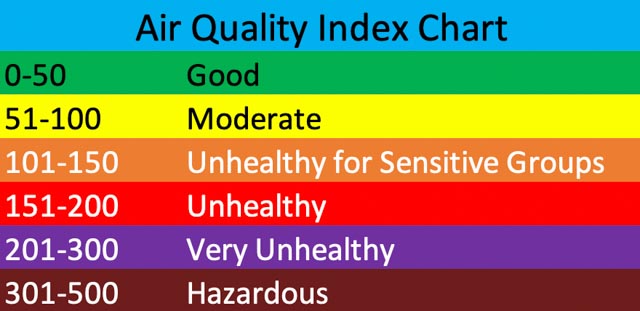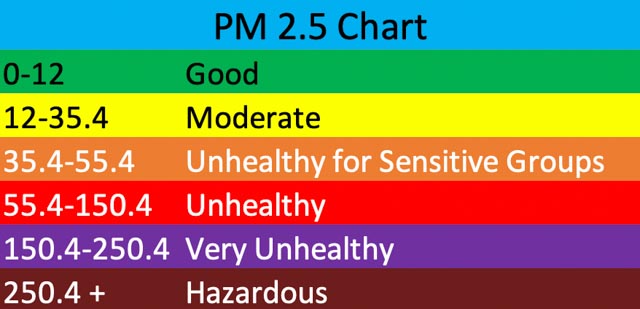Atmospheric conditions such as Ultraviolet Index, Air Quality Index, and Particulate Matter (PM) 2.5 can help researchers find the root cause of changes in Lake Tahoe. Being aware of changes in atmospheric conditions can also impact recreation and potentially effect people sensitive to air quality issues. View the current conditions in the Tahoe Basin below. The UV Index is updated every hour and the AQI is updated approximately every two minutes.
Ultraviolet Index
UV Index is a measurement of certain measures of ultra-violet rays that are harmful to human skin. The higher the UV Index, the more likely an individual will receive a sunburn.
UV Index in the Tahoe Basin:
UVI Last Updated:

Air Quality Index for the Tahoe Basin
The air quality in Tahoe is usually spectacular, but when smoke comes into the basin, air can become quite hazardous.
Air Quality Index is a measurement system that shows how clean or polluted the air is around you. Look at the chart below to understand the levels of the air quality index.
PM2.5 stands for the particulate matter (PM) in the atmosphere that has a diameter of 2.5 micrometers or smaller, which is about half the diameter of a human blood cell. These particles are harmful to humans because they stay in the air longer allowing more of them to be inhaled. These particles are so small that many of them bypass the protective measures that are in the nose and throat, causing them to enter into the lungs. (μg/m3 means micrograms per meters cubed).
| Location | Air Quality Index | PM 2.5 Value (μg/m3) | Levels of Health Concern |
|---|---|---|---|
| Incline Village: | |||
| Homewood: | |||
| Tahoe Keys: | |||
| Glenbrook: | |||
| Rubicon Bay: |
 |
 |
AQI Last Updated:
Sensor data provided by PurpleAir
Page created by Brian Wiebe

